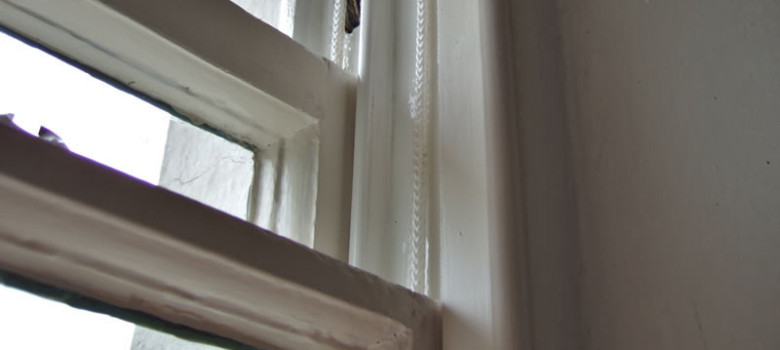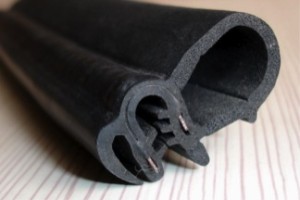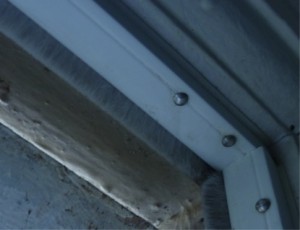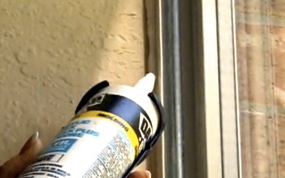
Do my windows need draught-proofing?
Not all windows need to be draught-proofed. Double or triple glazed windows installed since 2002 should be sufficiently well-built and installed so as not to require any. Older double glazing and single glazed windows can be draught-proofed, however. If you are unsure on the age of your double glazing, you should check for either a FENSA certificate, which you will have received with any windows installed since 2002, or a stamp in the metal seal of the window.
Where to look for draughts
- The gaps between the window and the frame
- Caulk on the outside of the window frame
- The area around any locks or catches
Although the potential for draughts to occur around the edge of one window is not equal to that of an external door, the accumulated draught from every window in your house can account for huge amounts of energy loss. Therefore it is crucial to draught-proof these areas. In order to complete a successful draught-proofing of a window, you must firstly pinpoint the gaps that require work. After locating the area that requires draught-proofing, there are a few methods to consider.
How can I draught-proof my windows?
How should I draught-proof a window that opens?

Firstly, compression seals provide a professional finish and prevent draughts, as well as dust and moisture entering the home. The seals are sometimes held by metal, plastic or wooden carriers, which are fixed onto the frames through pre-drilled fixing holes. This maintains the ‘memory’ or ‘bounce-back-ability’ of the seal, enabling it to return to its original shape even after periods of crushing, due to normal everyday use of the window. The carrier is cut to length and must be less than 25mm from the cut end to avoid any snagging on unwanted items such as clothing. However they may also be glued to the frame. While these compression seals, as well as the similar tubular seals, provide excellent performance on narrow window gaps, they are not the best option when draught-proofing sash windows on larger properties.
How should I draught-proof a window that doesn’t open?
The best method for draught-proofing a window that does not open is a silicone-based sealant. After the gaps in the framework have been located and cleaned to remove any dust that may reduce the longevity of the draught-proofing method, a gunned silicone sealant can be easily applied. This is a cheap and easy way to DIY draught proof.
How should I draught-proof a sash window?

If you are looking to draught-proof a sash window or if the gaps between the window and its frame are not consistent due to seasonal changes, brush strips may provide the best solution. While mainly used in the draught-proofing of doors, it is not rare to see this method around larger windows. This solution involves brushes or blades fixed into a carrier, which is pinned onto the frame. While they may be painted to reduce their visibility, this does decrease their efficiency. However the brushes or blades may be contained using wooden carriers, which may provide a more aesthetically-pleasing solution to window draughts.
Another method of draught-proofing your window, and common when taking the DIY approach, is low-friction seals in loose strips or carriers. This solution involves the rubbing of wipers or blades, which are fixed onto the frame, against the closing window. While they may also be fixed using an adhesive-based foam strip, this method (although cheap) does not comply with British standards and is therefore not recommended.
Using gunned silicone as a sealant

A DIY-friendly and relatively cheap solution to your window draught-proofing needs is gap-filling seals with gunned silicone sealant. In order to ensure that maximum draught-proofing is achieved, you must cover the part of the window that comes into contact with the frame in a release agent. This prevents the sealant from sticking to the window as opposed to the frame. The window is then shut to provide a temporary mould for the sealant before it sets. While it provides an efficient solution to the draught-proofing issue, if it isn’t carried out correctly, the result may look untidy.












I have sash windows that need draught proofing and refurb also maybe insulation
How does one fill an uneven gap around a door. Foam strips et all tend to prevent the door from shutting!
Check out Quattro Seal , a draught sealing solutions for all shapes , styles and fabrics including UPVC. BRE rated up to 27%, used on many iconic and historic buildings over the last 25 years. The system deforms to any shape and size of gap allowing the units to function as before.
I have new aluminium tilt and turn windows and they let a draught through on windy days can someone help as manufacturers and not helpful
thank you
Same problem we have. Atm we have around 70km gusts and I can feel a cold breeze sitting 2m away from the windows. I have tried an L-shaped strip but it didn’t work. I have no clue where to attach a foam or rubber strip because either it’s too thick and I can’t close the window or just does nothing. I don’t want to waste heating with the price of gas we have atm.
Will impact-resistant glass prevent intruders from breaking into my home?
After a lot of research trying to avoid spending for a professional system, the best way to draught proof windows that is reversible and can’t be seen is scrunch in cling film into the gaps.
Worked a treat and surprisingly dropped the noise level as well (unexpected happy surprise). When I wanted to open my windows in Summer, I just pulled out the clingfilm and away I went.